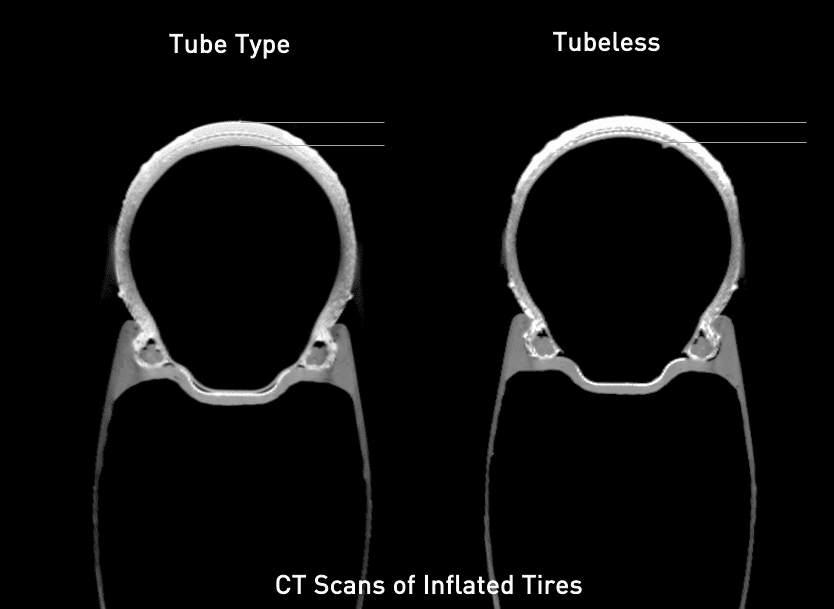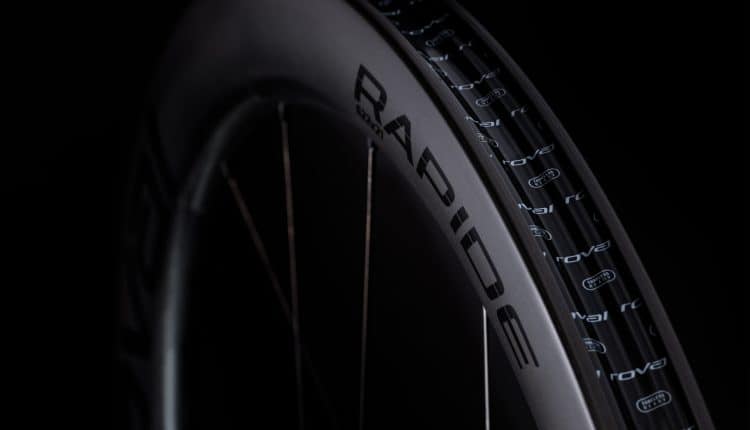ROVAL RAPIDE CL II WHEELS – OFFICIALLY TUBELESS
For your safety don't exceed 75 psi when tubeless, period.
Specialized and Roval were once leaders in the road tubeless segment. Developing wheels and tires that for their time were leaders in the category. The release of the Rapide CLX and CL wheels along with the launch of the Tarmac SL7 in our opinion was a confusing and huge tubeless mistake as they released a tubeless wheel that they didn’t feel was safe for tubeless. Worst of all they doubled down on their no tubeless claims saying tubes were the fastest when they had research saying otherwise, just not the tubeless product to back the tubeless is faster research.
Earlier this year they launched the updated Rapide CLX II wheels that they claimed fixed the shortcomings of the original tubeless mishap. Along with the release they finally released the other third of the original results saying tubeless is faster than a tube system. They also launched a flexing rim bead for when you try to run over a block of steel in the roadway at speed, or maybe a curb. In reality, it’s a fairly rare occurrence that a rider might have and hopefully they do their best to lift over the obstacle completely eliminating the need for the new rim bead design.
For us, the hardest part about recommending these wheels is the misleading information that Specialized is delivering with them. This goes for all of their wheels that they say you can run up to 110 psi in a tubeless tire, YOU SHOULDN’T. It doesn’t matter if the wheel bead is hookless or hooked; when you are running tubeless, you should never exceed 75 psi. If you need more pressure than 75 psi for your specific setup, then increase volume (tire size), so you can remain under that safety threshold.
SRAM has a terrific tire pressure calculator that will give you a great starting point. It takes into account all of your specifics and is a great tool to use before you head out to purchase new tires. Run different sizes through the calculator and see what size is best for you and how small you can really go to stay under 75 psi. Again, do not run 110 psi in a tubeless system.
We have a great article WHAT’S THE DEAL WITH ROAD TUBELESS? that helps explain a lot of the tubeless questions. Specialized is claiming because their rim has a hooked bead you can run more pressure, but why? Modern research has debunked the theory that more pressure means more speed and the funny part is the press release below even mentions it. A hooked bead only secures a tire better if there is a tube present to sandwich the tire between the rims hook and the pressurized tube, this is a mechanical bond.
“Remember that if you have a tube system and hooked bead with a large-volume tire, there is a mechanical bond holding the tire’s bead against the hook and still allows for higher pressures (over 75 psi). The higher pressure can impact ride quality and performance on a large-volume tire, but it is possible. With that same rim-and-tire combo (assuming it was tubeless-ready), as the name implies, tubeless has no tube holding the bead of the tire to the hook of the rim. This means the chances of failure (the bead blowing off the rim) can increase if the pressure runs too high.”
With that out of the way we are excited that Roval is releasing a more cost-effective version of the tubeless Rapide wheels and because they were unable to create the flexing bead in a lower grade carbon, you get a CLX level carbon rim laced to a DT Swiss 350 hub instead of their “aero optimized” hubs that use DT Swiss internals. For your safety and better performance, use the SRAM pressure calculator to optimize your setup.
Press Release
You’ve already met the new Rapide CLX II wheels. They are world beaters. Just launched in May they already have Tour stage wins and Grand Tour victory on their palmares. Now that level of performance is coming to more riders – World Tour racing license optional.

The all-new Rapide CL II wheelset brings the same Rapide CLX II speed, that same efficiency, that same incredible handling and stability in any condition to more riders. Built on the exact same rims as the Rapide CLX II the performance is elevated with tubeless done right technology. The Rapide CL II makes that performance easier to catch at check-out, and almost impossible to catch on the open road.
Two Rims in One
The Rapide CL II is actually two wheels in one, each optimized for the unique aero challenges of its position—a 51mm-deep front rim with a 35mm external width and a 60mm-deep rear rim with a 30mm external width. The result is a tubeless wheelset that’s faster than most 65mm wheels but is 25% more stable than our CLX50 in heavy wind.

The rear wheel is the last thing the wind sees, so we developed that rim shape to minimize drag at the trailing edge of the bike. At 60mm deep with a 30mm external width, the Rapide CL II rear rim reduces turbulence and yields the greatest aerodynamic benefit. Since the rear wheel doesn’t affect steering the way the front does, this deep section doesn’t adversely impact handling. Together, they represent the fastest package for real-world race conditions.
Stability Equals Speed
Deep-section front rims are affected adversely by crosswinds. This negatively impacts handling, in turn causing a rider to slow down. By utilizing the first modeling algorithm designed around riders’ real-world reaction times we developed a front rim that both reduces drag AND increases stability by 25% in sudden wind gusts compared to our previous 50mm rims.
We know from extensive automotive and aeronautical reaction timing studies that it’s wind gusts between 0.5 and 2.0 seconds that riders struggle with. Essentially a rider can’t react to wind gusts shorter than 0.5 seconds; they are too short. A rider can react to gusts lasting between 0.5 and 2.0 seconds but will react after the wind gust is over. This causes an overcorrection that needs to be corrected again, which is why blustery crosswinds feel so sketchy. So we instructed our algorithm to optimize stability in the 0.5 to 2.0 second window time. Faster than that, and you can’t react quickly enough to overcompensate. Slower than that, and you can easily adjust to the side force of a crosswind.

For days, the algorithm randomly mutated, virtually kicking out low performers and iterating on high performers. The resulting Rapide shape was the best combination of pure drag reduction and stability within the reaction time frame that matters for a rider.
Systems Approach
The Rapide CL II is hand built every step of the way, from the initial lay-up to the final tensioning on the nipples. Built on DT Swiss 350 hubs with a 36-tooth Star Ratchet and Competition Race straight pull spokes the result is a set of wheels designed as a complete system that weighs just 1590 grams a set, delivering incredible reliability and durability, with World Tour-ready performance.
Hooked on Tubeless
The reduced rolling resistance of a tubeless setup is undeniable, as are the benefits of improved handling and incredible puncture protection. The development of the Rapide CL II involved the most rigorous and extensive engineering and testing program that we’ve ever undertaken and resulted in a wheelset that almost doubles current industry impact standards while managing to achieve the lightest weight possible. It took 21 months, but the resulting rims are the strongest we have ever made at the lightest possible weight. As a system, they now pass the rigorous testing standards we have created while delivering more performance as a tubeless system than the world-beating tube-type Rapide and Alpinist.

Why Tubeless is Faster
Lower internal friction equals more speed and grip. When the tire rolls through the contact patch, the tire casing must deform. This causes internal friction, which increases rolling resistance and uses energy that could be used to propel you forward. Using a tube means more material deforms—casing and tube—so more friction is created, and more energy is lost.
Running tubeless significantly reduces the amount of material that must deform—tire alone—which reduces friction and reduces the energy lost, leaving more energy to propel you forward. Decreased material deformation also leads to a tire that deforms easier in response to road imperfections for better grip and a more comfortable and controlled ride. These are “always-on” benefits, regardless of speed or terrain. If your tire is rolling, you’re faster on tubeless.
“We can say the average the rolling resistance reduction is 8%. In terms of a performance road racing tire at 40 kp/h, it is a 1.7 watt saving per tire, 3.5 watts per bike.” – Oliver Kiesel, Specialized Tire PM
The Rapide CL II utilizes a hooked rim (allowing for real-world riding pressures up to 110psi, if that’s your thing) for secure tire bead retention and an easier setup and mounting experience than ever before. This is tubeless done right.
True To Your Ride
The Entire Roval team is really proud of the new Rapide CL II wheels. These wheels represent years of work with our teams, in the test lab, and out on the road. Taking World Tour-level performance and injecting it into a wheelset available to more riders, with durability and reliability for many seasons of riding on the most demanding roads in the world is what being true to your ride means.
Tech Details
Rim: Rapide CLX Carbon Clincher, 700c, Disc Brake, Tubeless
Rim Details: Front – 51mm Depth, 35mm External Width, 21mm Internal Width; Rear – 60mm Depth, 30mm External Width, 21mm Internal Width
Hubs: DT Swiss 350 Straighpull Center Lock, Star Ratchet 36t internals (10 degs) , 100x12mm & 142x12mm
Spokes: DT Swiss Competition Race Straightpull, Radial/Two-cross (2:1) 18 count, DS: 258mm, NDS: 270mm; Rear: Two-cross (1:1) 24 count, DS: 256mm NDS: 260mm
Tire Size: 24mm – 38mm; Max Pressure: 24mm-35mm: Tubeless (110psi) Tubed (130psi), 36mm – 38mm: Tubeless (60psi) Tubed (60psi)
Weight: (claimed) Wheelset 1,590g, Front 725g, Rear 865g (including 15g, tubeless rim tape and tubeless valve)
System Weight Limit: 275lbs / 125kg
Price: $1750 (Wheelset), $1025 (Rear), $725 (Front)




Comments are closed.